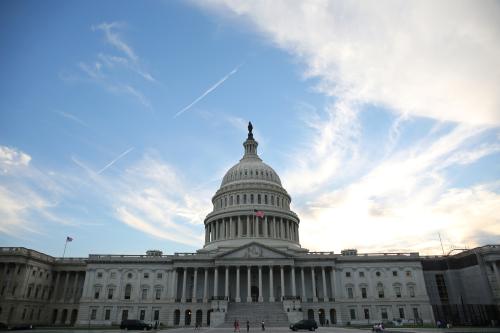The House and Senate have passed different versions of the Tax Cuts and Jobs Act (TCJA). Both bills would reduce federal revenues by more than $1.4 trillion over the next decade, and would introduce large corporate tax cuts; large tax cuts for pass-through businesses and estates; and smaller tax cuts for most individual wage and salary earners.
A key question is how the plans would change the distribution of taxes paid. Most analysts focus only on the direct provisions of the TCJA. But government budget constraints imply that tax cuts are not free. Tax cuts eventually will have to be paid for with higher taxes or lower spending.
In a new paper, Surachai Khitatrakun, Aaron Krupkin, and I address the distributional effects of these plans, including alternative ways of paying for the costs of tax cuts. Our central finding: If you consider plausible ways of financing either the House or the Senate bill, most low-and middle-income households would eventually end up worse off than if the bill did not become law. In other words, they would lose more from inevitable future spending cuts or tax hikes necessary to eventually offset the costs of the tax bill than they would gain from the tax cuts themselves.
We analyze three financing mechanisms – payments that are equal across households in dollars, equal as a share of income, and equal as a share of current income taxes paid. The first would be the most regressive of the three, the last would be the least regressive.
For example, under the House plan, the direct provisions of the tax cut would reduce taxes in 2018 for 76 percent of households and raise taxes for 7 percent of households, including 10 percent of middle income households, all compared to current law. However, if each household had to contribute an equal dollar amount in 2018 to finance the tax cut, the combined effect of financing and the direct provision of the tax cut would cut taxes in 2018 for just 27 percent of households and raise taxes (or, formally, reduce income net of taxes and benefits) for 73 percent of households. All households in the bottom 20 percent of the income distribution and 71 percent of middle-income households would pay more under this tax cut and financing arrangement.
If financing the tax cuts in 2018 were proportional to households’ income, the net distributional effects would be somewhat more muted, with almost 40 percent of households receiving a net benefit. If financing the tax cuts in 2018 were done proportional to households’ current income tax liability, the results are not uniform across income groups; lower and middle-income households would tend to be better off and higher income households worse off.
Note that alternatives we did not analyze could be even more regressive. Republican leaders have recently suggested they will turn to cutting welfare and entitlements once a tax bill is complete. If this strategy is followed, the effects of the tax cuts plus their financing would be even more regressive than the alternatives we reviewed.
Our estimates do not account for potential economic growth effects because several recent studies suggest that such effects would be relatively small. Incorporating small growth effects would not change the basic conclusions. Nor do we include the effects of the Senate bill’s proposed repeal of the Affordable Care Act’s individual mandate. If we included that item, the net effect of the TCJA would be even more regressive.
The distributional effects of different forms of financing produce very different pictures. But however Congress chooses to pay for $1.4 trillion in tax cuts, once the financing is incorporated into the analysis, the benefits of those tax changes could well be quite different than they first appear.







